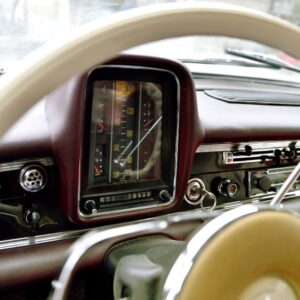Upfitter switches are also called auxiliary switches, and they’re essentially switches that allow drivers to turn on various features on their trucks. Why are they called upfitter switches? Upfitting is a cross between upgrading and outfitting. The term is particular to the truck scene, and it’s used to describe taking a stock setup and outfitting it with accessories and gear that serve different purposes. Upfitter switches are the switches that control these outfitted components.
Upfitter switches are typically mounted on the instrument panel or dashboard. The switches turn on the part’s corresponding relay, which is responsible for completing the circuit that powers the outfitted component. The vehicle’s ignition switch needs to be turned to the “on” position before the upfitter switches can turn on their corresponding devices. This is because most upfitter components take 12 volts of power from the vehicle’s battery.
What Are Upfitter Switches Used For?
Upfitter switches are typically used to control truck accessories like flood lights, snow plows, and winches, among other features. Some trucks like the Ford F-250 come with upfitter switches. GM and Ram also offer upfitter switches as an option. If your truck doesn’t have upfitter switches, you can get them as an upgrade.
Ford F-250 Upfitter Switches
Unlike many trucks that don’t come with stock upfitter switches, the F-250 is fitted with up to six upfitter switches located on the overhead console. You might be wondering “what are the upfitter switches on Ford F-250s used for?” The upfitter switches don’t control any features or devices, but the switches allow F-250 owners to get devices and upgrades for their trucks and set them up without adding an aftermarket upfitter switch.
Every switch is numbered and has a fuse that determines the amount of power it can deliver to a connected device. In the 2020 Ford F-250, the first four switches are rated for 25 amps, while the last two are rated for 40 amps. However, in older F-250 models, these switches can provide 8, 12, 20, or 30 amps.

How to Connect Upfitter Accessories and Devices
There are blunt-cut sealed wires found beneath the steering column and behind the passenger compartment fuse panel or central junction box. These wires are connected to the vehicle’s power source and the vehicle’s upfitter switches. Connecting accessories to the upfitter switch involves connecting these wires to the component.
Each wire has a distinct color that corresponds to a specific upfitter switch. You can determine the color that each upfitter switch corresponds to by checking the truck’s manual.
Before you connect an electrical device to these wires, you need to carefully consider their amperages. You can’t attach an accessory that has a high amperage rating because the wire thickness can only handle a certain amount of power. If the device draws too much power, it can damage the fuses and wiring.
When setting up the wires for any component, keep in mind that you’re not supposed to route the wires on parts that produce heat. You should also note that you can also damage wires while you’re routing them. Make sure to seek the help of a professional if you find this task too daunting.
Any information provided on this Website is for informational purposes only and is not intended to replace consultation with a professional mechanic. The accuracy and timeliness of the information may change from the time of publication.




















